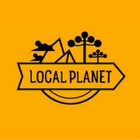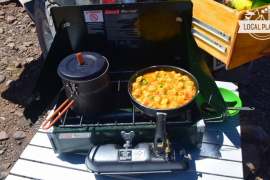From addiction to work, chocolate or hard drugs, we are really all addicts.
The animation “Why We Are All Addicts?” is only 4 minutes long, but it can show very deep philosophical issues:
- What is addiction?
- Are we all addicts?
- If so, why?
Watching it we can identify points in common with Vipassana meditation, that can also be a valuable tool to deal with the challenges showed in the video and we talk a bit about in the sequence.
Animation “Why Are We All Addicts?“
You can watch the movie in English or read the transcription right below.
To watch with subtitles, click on play below and then on the first icon on the right. Then on the cogwheel > Subtitles > Select the language you prefer:
Cartoon made by the artist Yan Dan Wong in collaboration with the project The School of Life
The narration of the cartoon is from the Swiss writer Alain de Botton, creator of the project School of Life, a global organization dedicated to the development of emotional intelligence.
We brought the text of the animation:
“We operate with some stock images of the addict: a person with a heroin needle in a park, or who nurses a bottle of gin in a paper bag at nine in the morning or who sneaks off at every opportunity to light up another cylinder of marijuana.
However dramatic and tragic such cases of addiction might be, they are simultaneously hugely reassuring to most of us – because they locate the addict far from ordinary experience, somewhere off-stage, in the land of semi-criminality and outright breakdown.
Such examples are dangerously flattering, categorising addiction in a sentimental way that lets most of us off the hook – and at the same time, cuts us off from identification with, and therefore sympathy for, the most wretched victims of addiction.

There are, in truth, far more addicts than we think. Indeed, if we look at the matter squarely: we are pretty much all addicts. The official statistics on the consumption of hard drugs or alcohol don’t begin to give a fair representation of the issue.
We need to define addiction in a new way: addiction is the manic reliance on something, anything, in order to keep our dark or unsettling thoughts at bay. What properly indicates addiction is not what someone is addicted to, for we can get addicted to pretty much anything. It is the motives behind their reliance on it – and, in particular, their desire to avoid encountering the contents of their own mind.
Being inside our own minds is, for most of us, and very understandably, a deeply anxiety-inducing prospect. We are filled with thoughts we don’t want properly to entertain and feelings we are desperate not to feel. There is an infinite amount we are angry and sad about that it would take an uncommon degree of courage to face.
We experience a host of fantasies and desires that we have a huge incentive to disavow, because of the extent to which they violate our self-image and our more normative commitments.

We shouldn’t pride ourselves because we aren’t injecting something into our veins. Almost certainly, we are doing something with equal commitment. We are checking the news at four minute intervals, to keep the news from ourselves at bay. We’re doing sport, exhausting our bodies in the hope of not having to hear from our minds. We’re using work to get away from the true internal work we’re shirking. The most compelling addictions sound very righteous to the world.
To get a measure of our levels of addiction, we need only consider when the last time might have been that we were able to sit alone in a room with our own thoughts, without distraction, free associating, daring to wander into the past and the future, allowing ourselves to feel pain, desire, regret and excitement.
We may start to see how much we have in common with the traditional addict. When we come face to face with them, we’re not meeting anything especially foreign, just a part of ourselves in a less respectable form – opening up new opportunities for kindness, towards them, and us.

We could start to think, too, of how we might wean ourselves off our chosen addictive pursuit. We need to lose our fear of our minds. We need a collective sense of safety around confronting loss, humiliation, sexual desire and sadness – knowing that we will have to keep running so long as we do not rehabilitate our feelings.
On the other side of addiction is, in a sense, philosophy – understood as the patient, unfrightened, compassionate examination of the contents of our own minds.
But perhaps the real, and most realistic goal, is not to expect that we can ever overcome all addiction forever: it’s simply to find our way to the least harmful and most beneficial kinds of addiction.”
Alain De Botton and illustrations from Yan Dan Wong
How Meditation Can Help?

The author talks about philosophy as a tool to understand your own mind. Meditation for me is also a powerful tool.
Some people may think meditation is a zen practice, for people who are calm and concentrated. A meditating person can really look very calm, but, actually, through the meditator’s mind in passing a whirlwind of thoughts, challenges and personal fights.
If from a side the addiction goal is to run away from what’s happening inside one’s mind. Meditation is on the opposite side, with the goal of: looking at the inner conflicts. Accepting our attachments or distastes. And, little by little, start developing ability of do not react to them is what we learn in Vipassana meditation course.

This practice has been helping me being less afraid to face the challenges of my life. So I feel less desire to run away or find distractions. As a consequence, I get to decrease addictions to what it may be: cell phone, work and money, material goods, my husband (yes, we are addicted to people too!), among many others.
Meditation is a daily work and requires a lot of effort. But the results are beautiful and very rewarding! I wrote about the process of learning how to meditate and it has been helping me. And also how to enroll in a Vipassana course, that takes place in several places in the world and are free.
Well, the first step seems to me that is identifying where we need to get better, evolve. Find the tools to do that. The second, use them and put into practice. The third, day after day.
Only all of these! Hehe! Always ahead and that we have success in our walking! (:
What did you think about these reflections? Let’s exchange some ideas in the comments!

![[Video] Why We Are All Addicts? And How Meditation Can Help?](https://localplanet.com.br/wp-content/uploads/2017/08/como-meditar-1-1000x508.gif)

![[Interview] 2-Year Bike Trip: Cycling Around America](https://localplanet.com.br/wp-content/uploads/2017/03/cicloturismo-viagem-de-bicicleta-america-do-sul-03-270x180.jpg)

Comentários estão fechados.